

Church of the Savoir on Spilled Blood
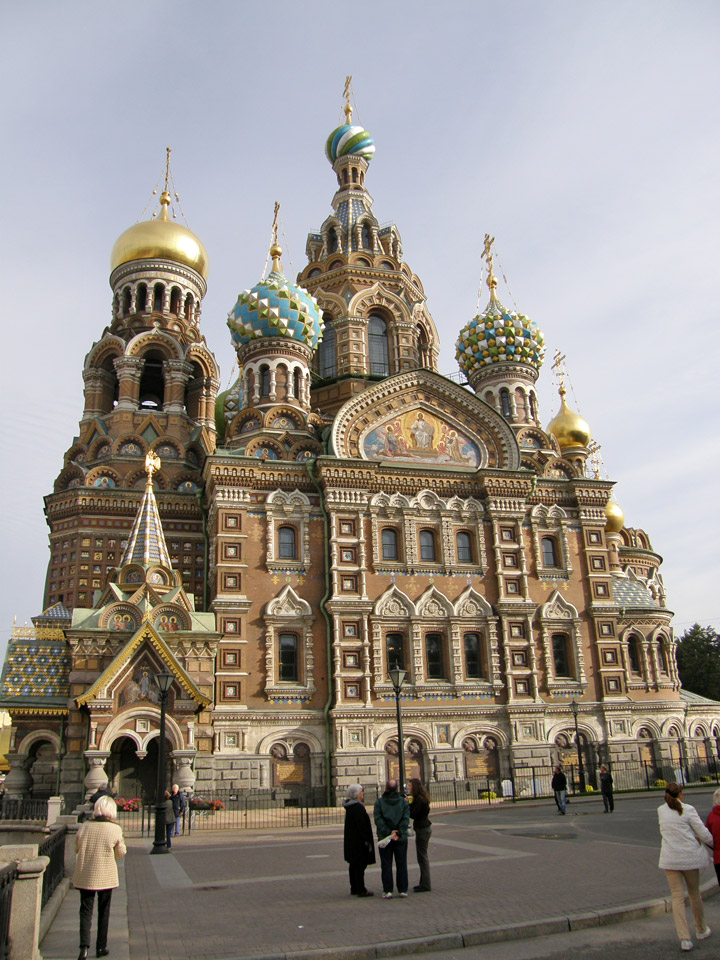
The Church of the Savior on Spilled Blood
The Church of the Savior on Spilled Blood (Храм Спаса на Крови) is one of the main Russian Orthodox churches of St. Petersburg, Russia. It is also variously called the Church on Spilt Blood and the Cathedral of the Resurrection of Christ (Собор Воскресения Христова), its official name. The name refers to the blood of the assassinated Alexander II of Russia, who was mortally wounded on that site on March 13, 1881 (Julian date: March 1).
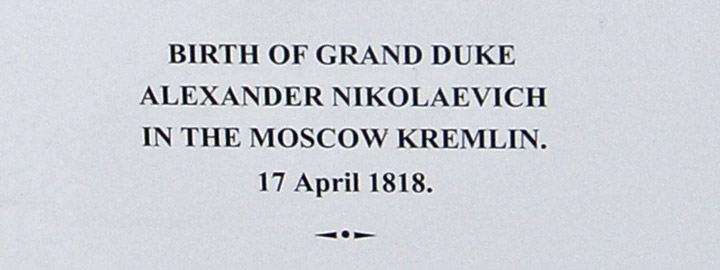
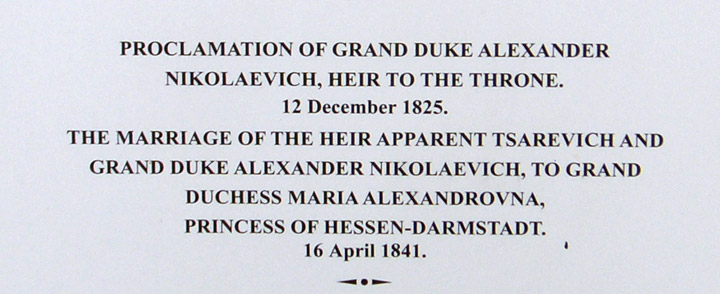

Construction began in 1883 under Alexander III, as a memorial to his father,
Alexander II. Work progressed slowly and was finally completed during the reign
of Nicholas II in 1907. Funding was provided by the Imperial family with the
support of many private donors.
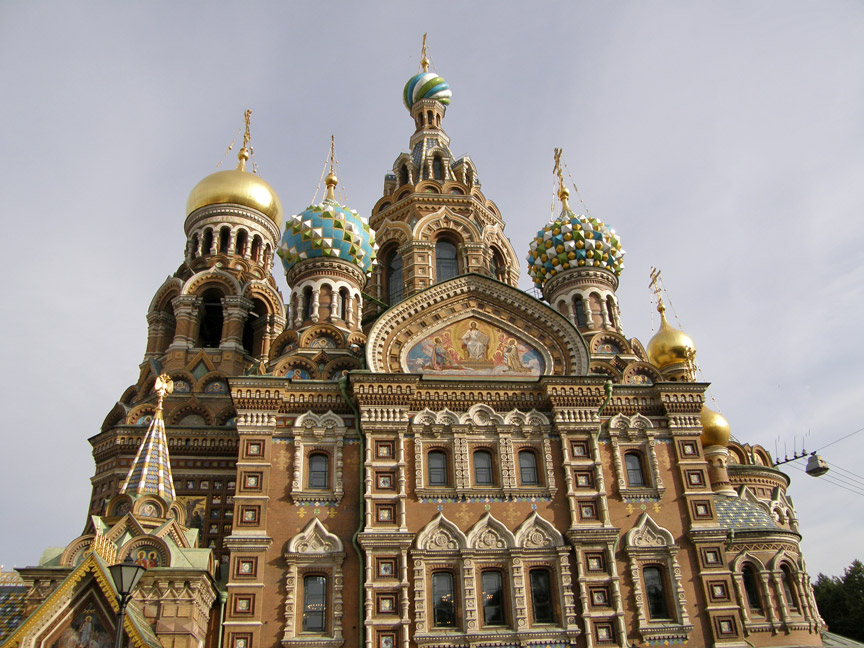
The Church is prominently situated along the Griboedov Canal. The embankment at
that point runs along either side of a canal. As the tsar's carriage passed
along the embankment, a grenade thrown by an anarchist conspirator exploded. The
tsar, shaken but unhurt, got out of the carriage and started to remonstrate with
the presumed culprit. Another conspirator took the chance to explode another
bomb, killing himself and mortally wounding the tsar. The tsar, bleeding
heavily, was taken back to the Winter Palace where he died a few hours later.
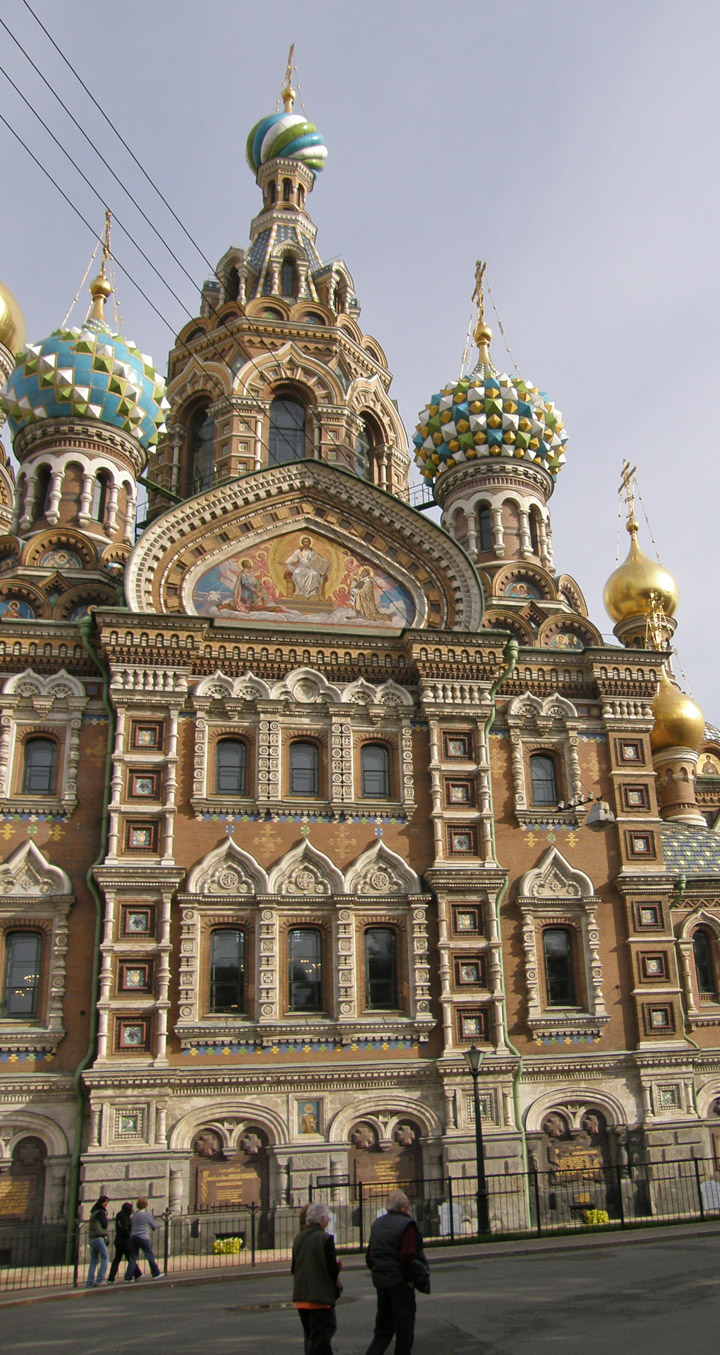
A temporary shrine was erected on the site of the attack while the project for a
more permanent memorial was undertaken. It was decided that the section of the
street where the assassination took place was to be enclosed within the walls of
a church. That section of the embankment was therefore extended out into the
canal to allow the shrine to fit comfortably within the building and to provide
space on the exterior wall for a memorial marking the spot where the
assassination took place. Inside, an elaborate shrine was constructed on the
exact place of Alexander's death, garnished with topaz, lazurite and other
semi-precious stones. Amid such rich decoration, the simple cobblestones on
which the tsar's blood was spilled and which are exposed in the floor of the
shrine provide a striking contrast.
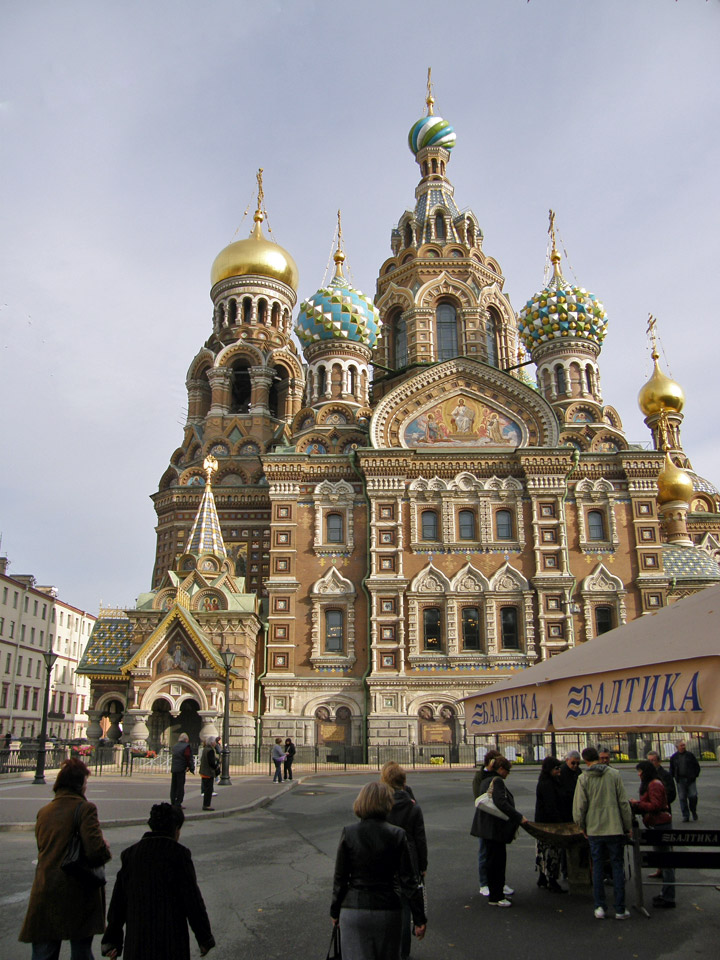
Architecturally, the Cathedral differs from St. Petersburg's other structures.
The city's architecture is predominantly Baroque and Neoclassical, but the
Savior on Blood harks back to medieval Russian architecture in the spirit of
romantic nationalism. It intentionally resembles the 17th-century Yaroslavl
churches and the celebrated St. Basil's Cathedral in Moscow. The Church contains
over 7500 square metres of mosaics -- according to its restorers, more than any
other church in the world.
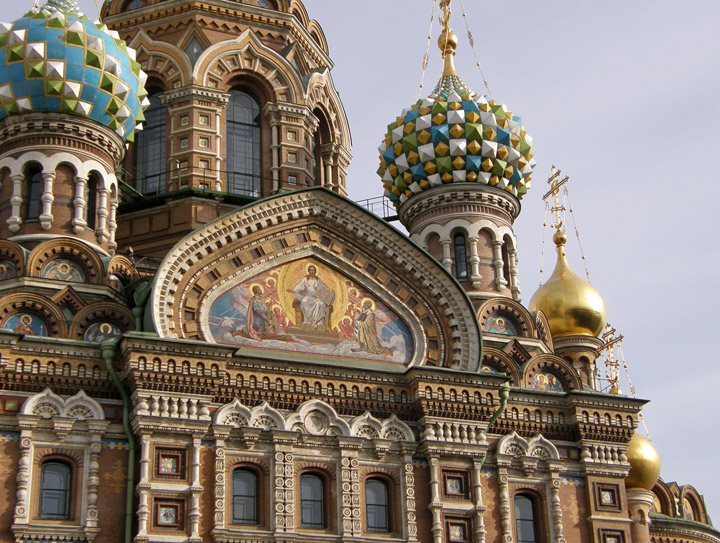
The interior was designed by some of the most celebrated Russian artists of the
day - including Viktor Vasnetsov, Mikhail Nesterov and Mikhail Vrubel - but the
church's chief architect, Alfred Alexandrovich Parland, was relatively
little-known (and Russian, despite his name). Perhaps not surprisingly, the
Church's construction ran well over budget, having been estimated at 3.6 million
roubles but ending up costing over 4.6 million. The walls and ceilings inside
the Church are completely covered in intricately detailed mosaics - the main
pictures being biblical scenes or figures - but with very fine patterned borders
setting off each picture.

the Griboedov Canal.
In the aftermath of the Russian Revolution, the church was ransacked and looted,
badly damaging its interior. The Soviet government closed the church in the
early 1930s. During the Second World War when many people were starving due to
the Siege of Leningrad by hostile Nazi German military forces, it was used as a
warehouse for vegetables, leading to the sardonic name of Savior on Potatoes. It
suffered significant damage. After the war, it was used as a warehouse for a
nearby opera theatre.
In July 1970, management of the Church passed to Saint Isaac's Cathedral (then
used as a highly profitable museum) and proceeds from the Cathedral were
funneled back into restoring the Church. It was reopened in August 1997, after
27 years of restoration, but has not been resanctified and does not function as
a full-time place of worship. Right now it is a Museum of Mosaic. Even before
the Revolution it never functioned as a public place of worship; having been
dedicated exclusively to the memory of the assassinated tsar, it commemorated
only panikhidas. The Church is now one of the main tourist attractions in St.
Petersburg.
Text from Wikipedia
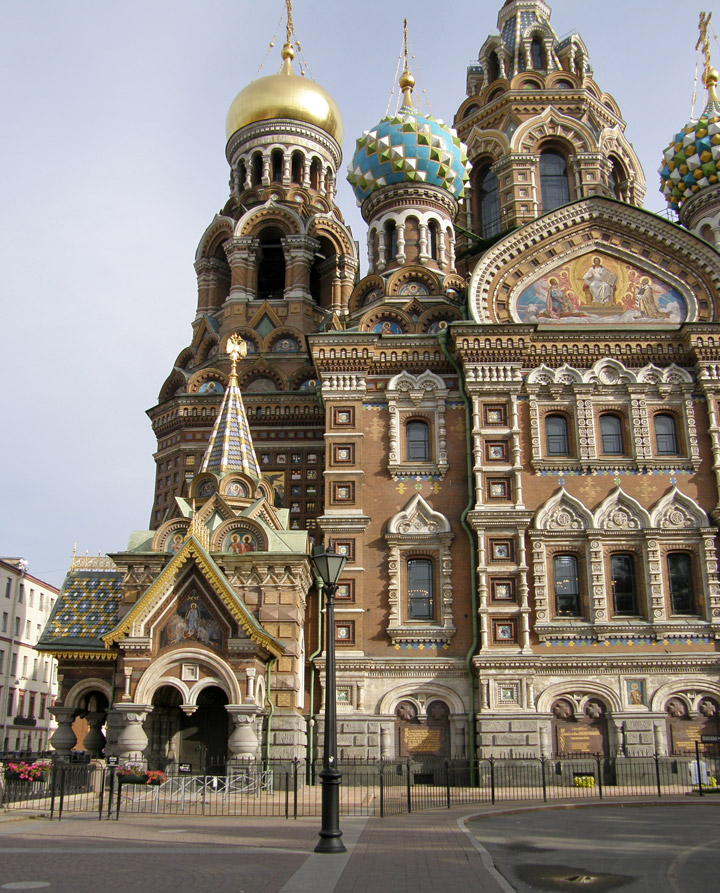

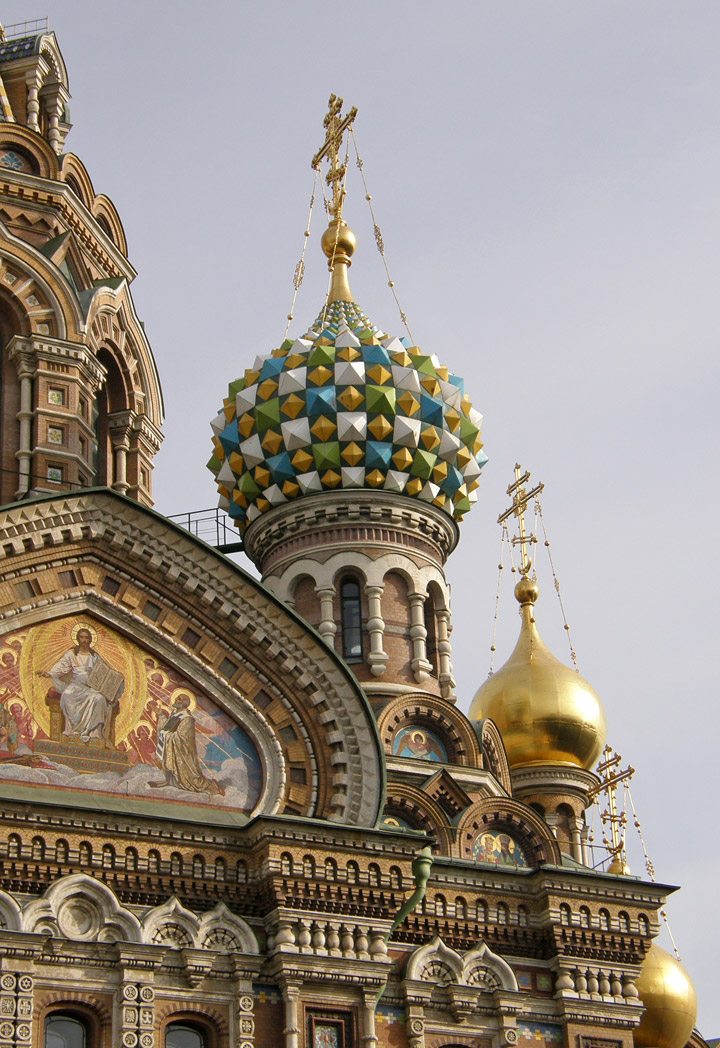
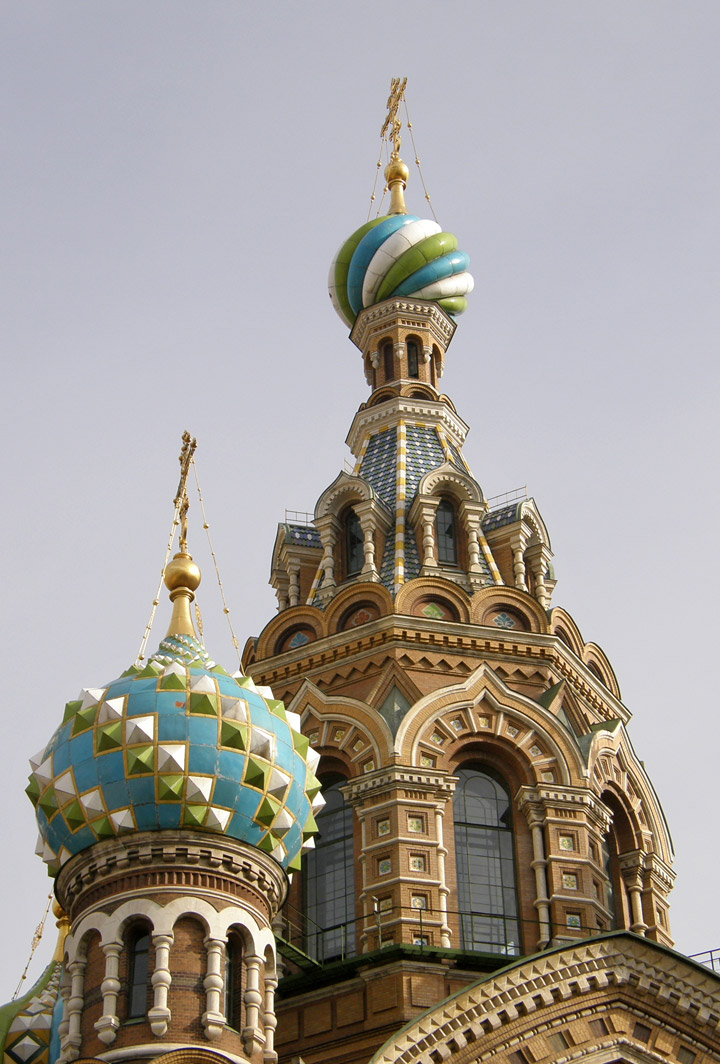
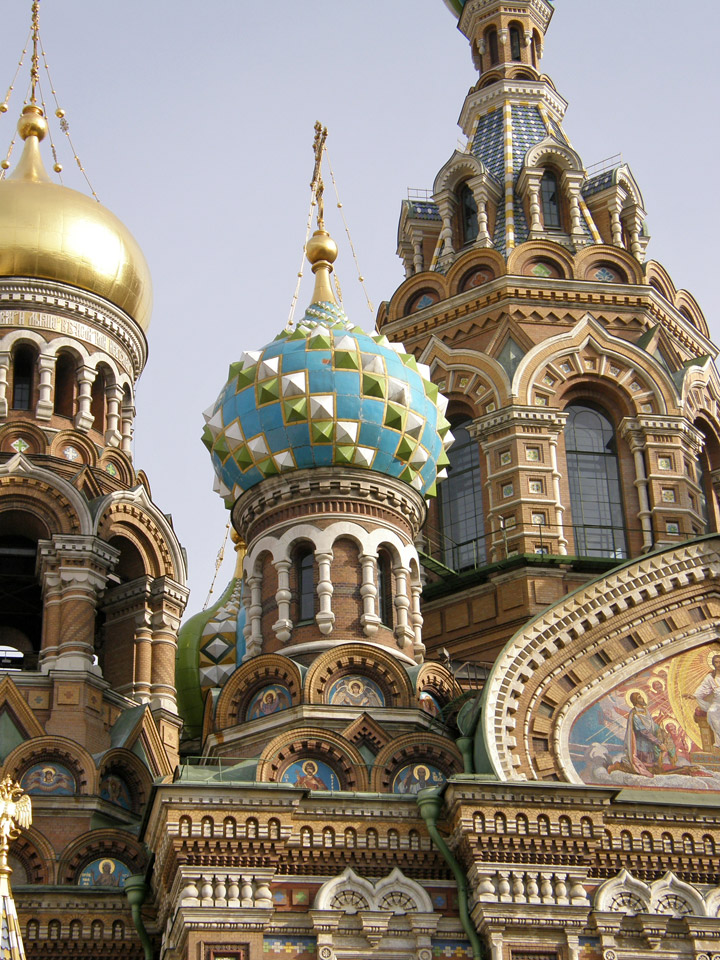
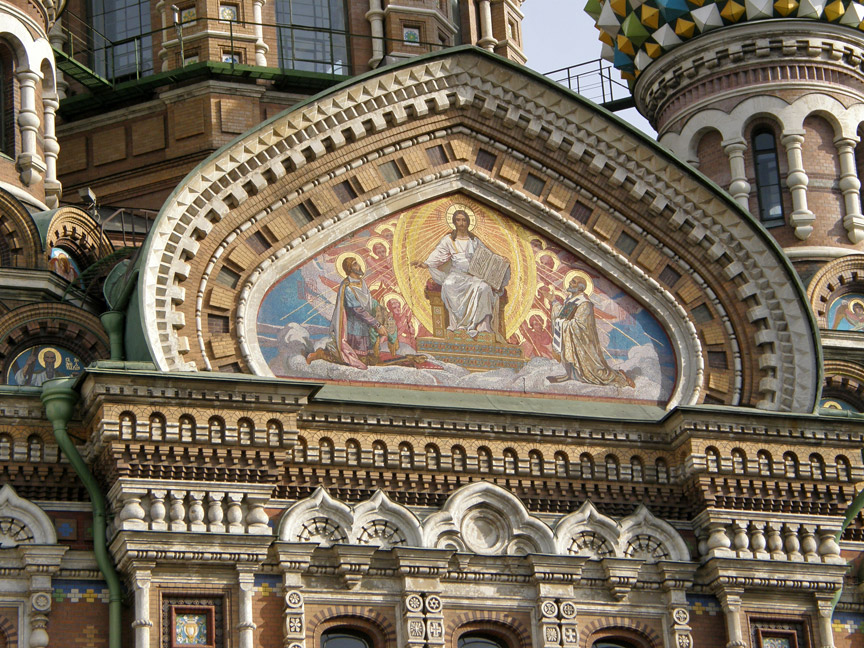
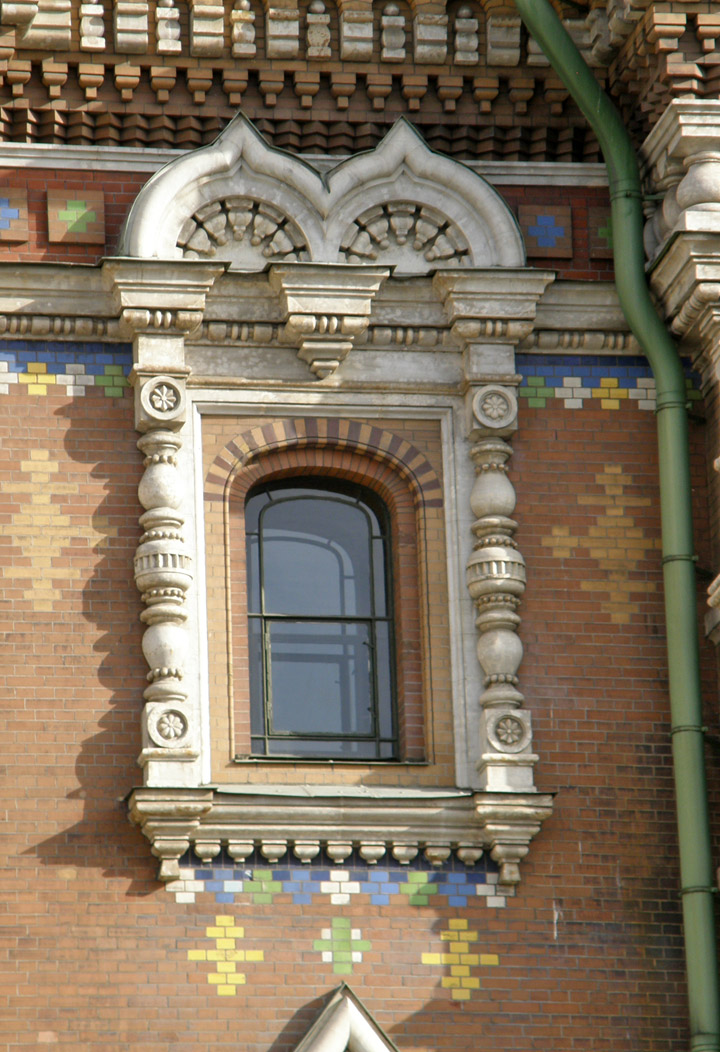
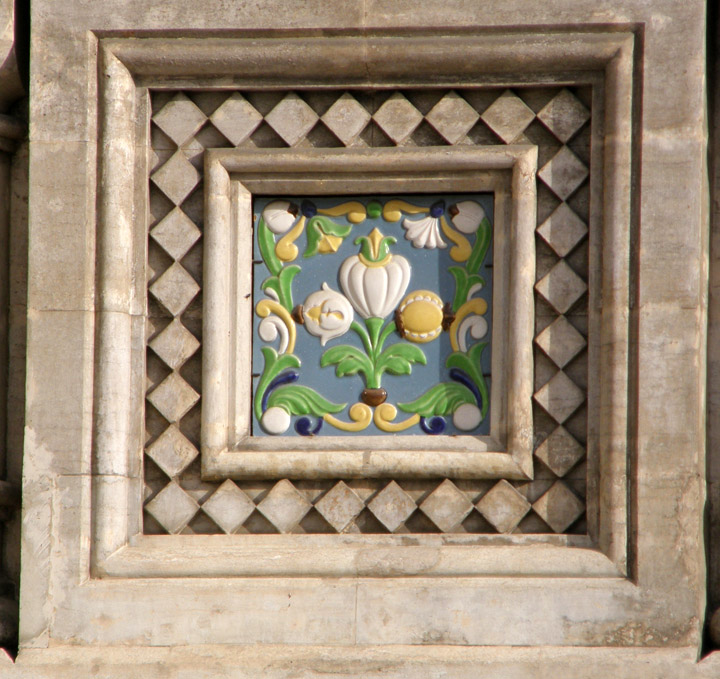


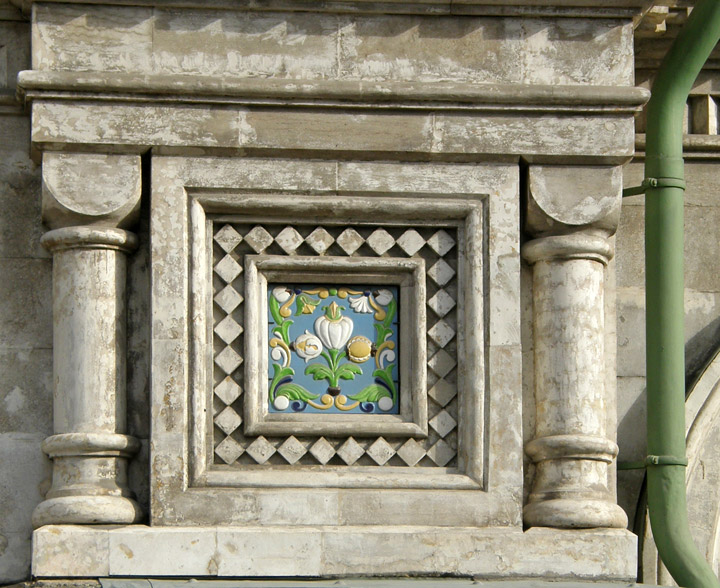
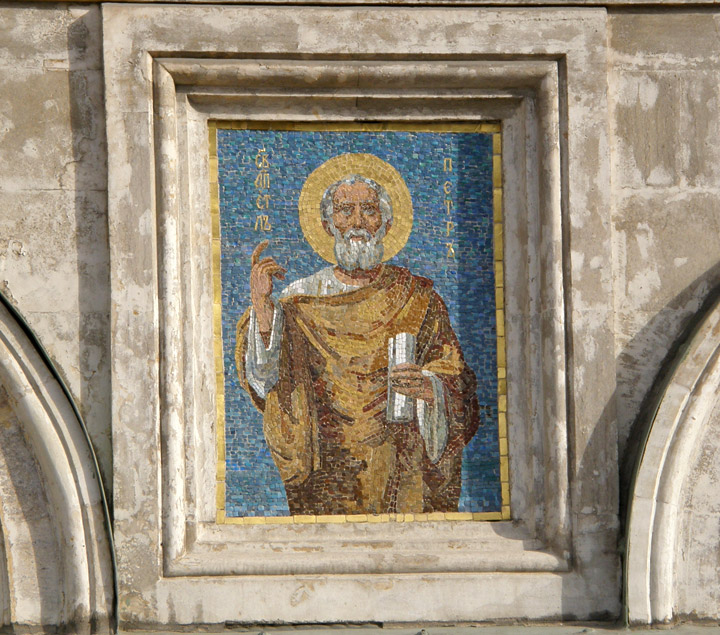
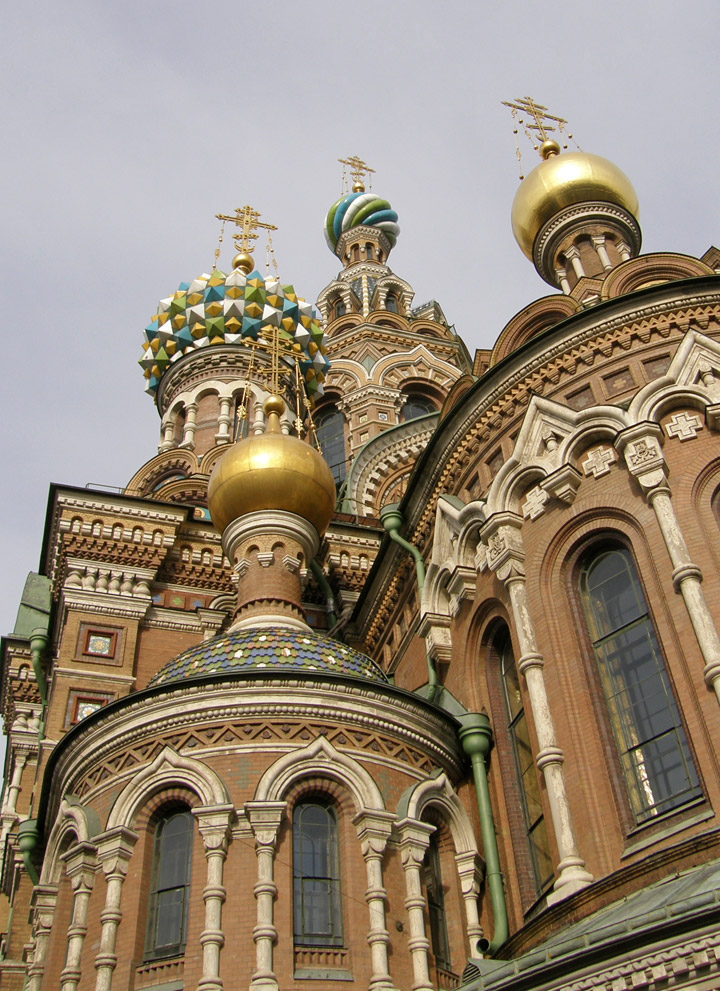
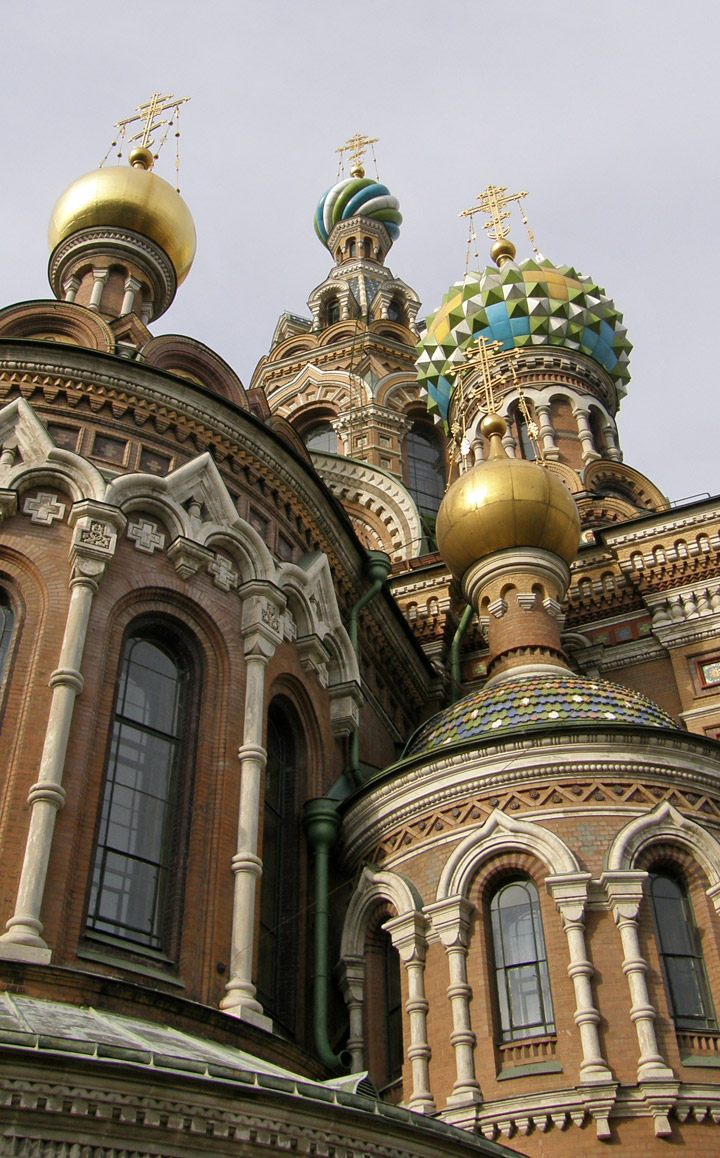
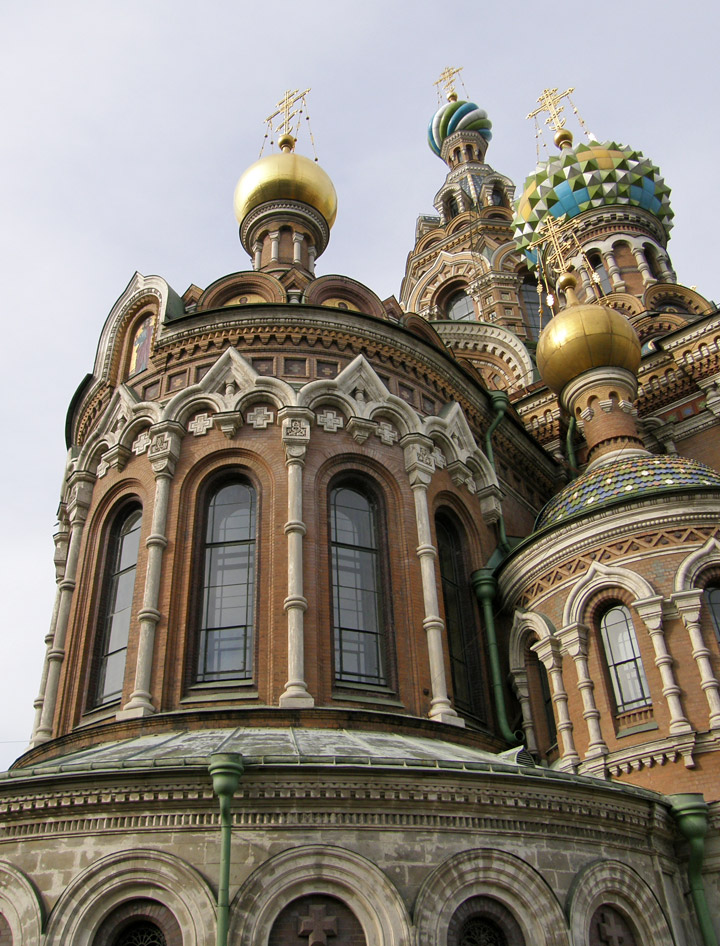
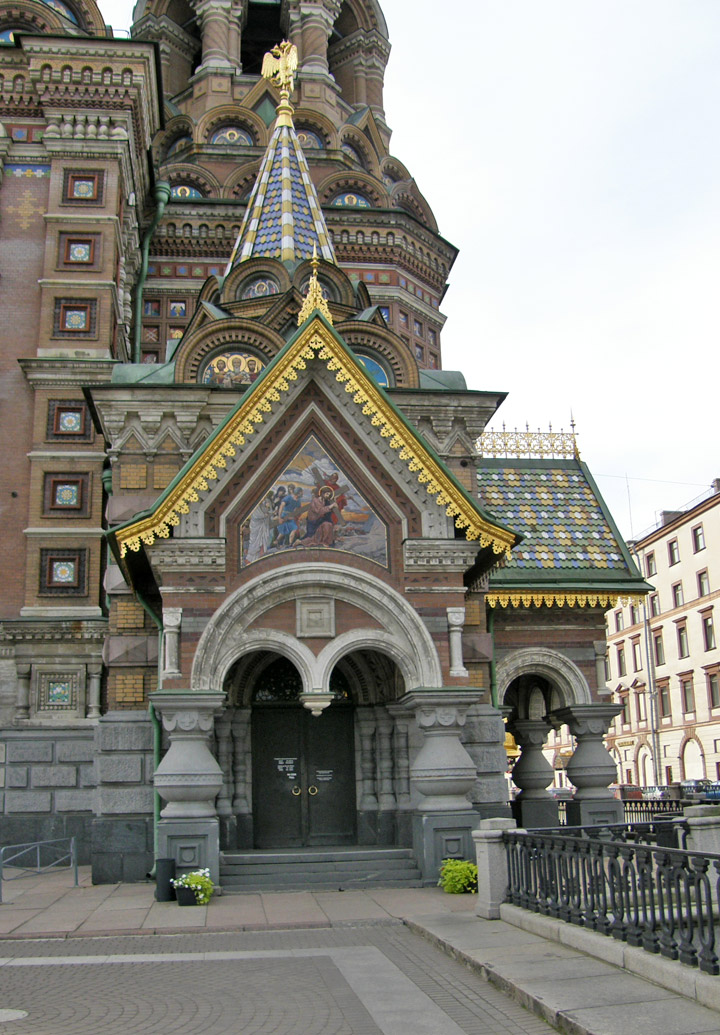
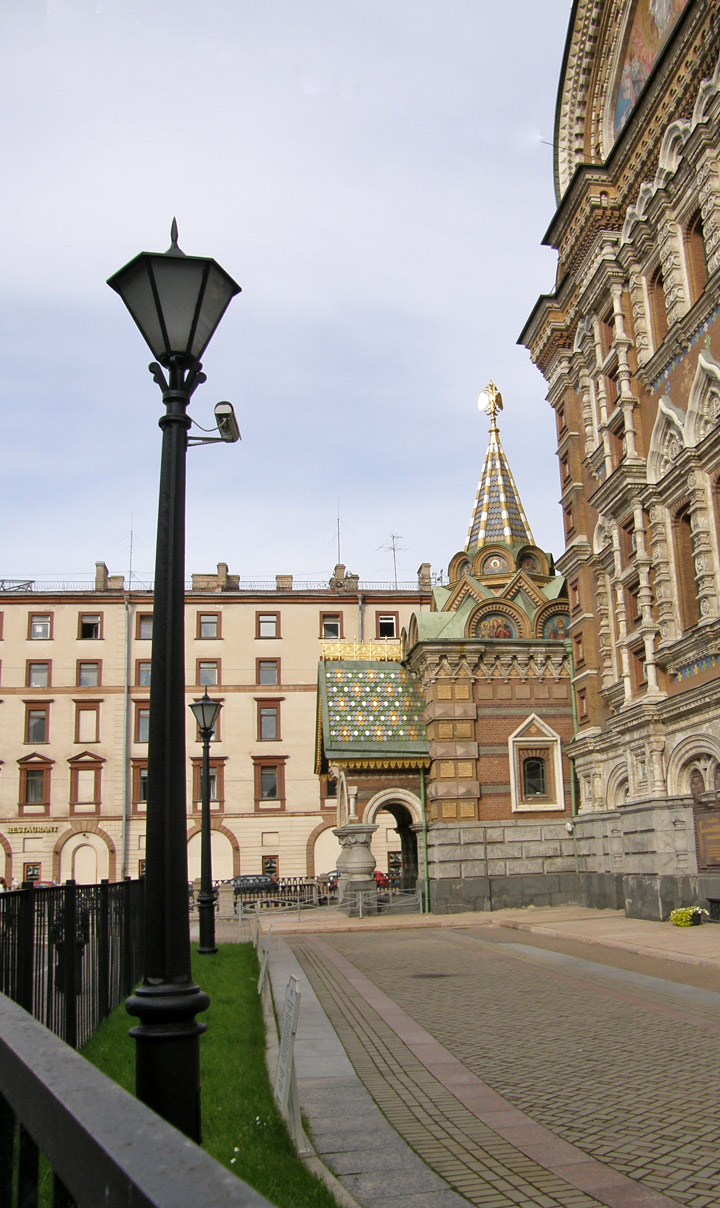
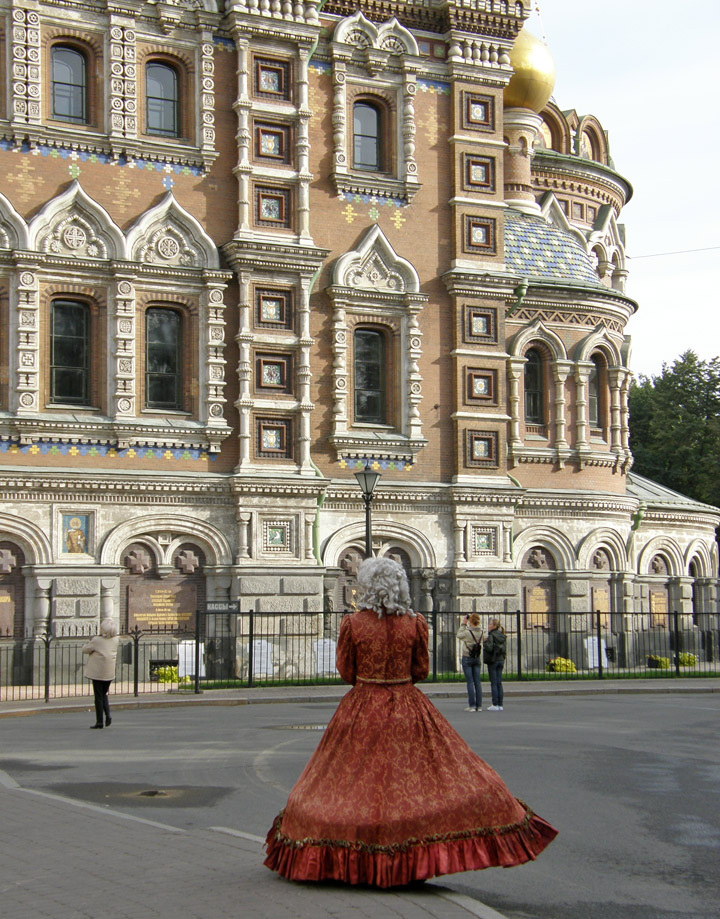
in period costume

across the street
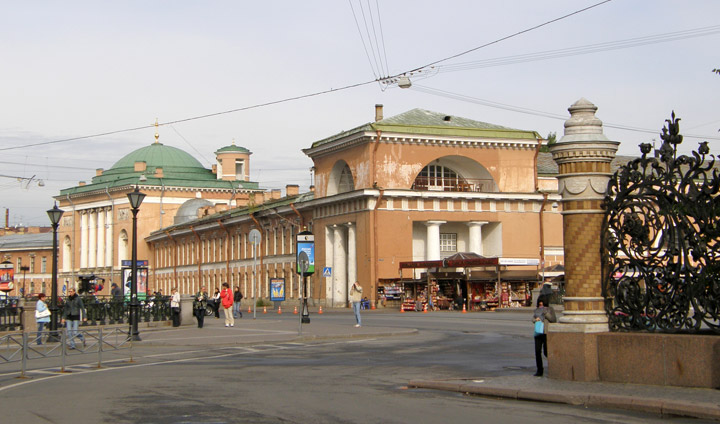
nearby market